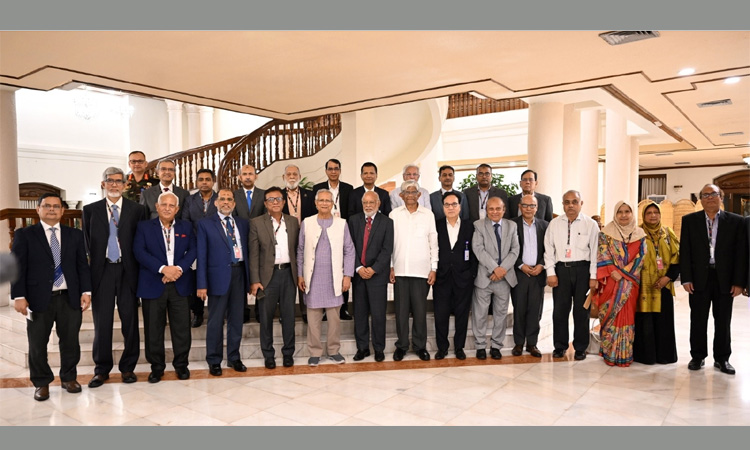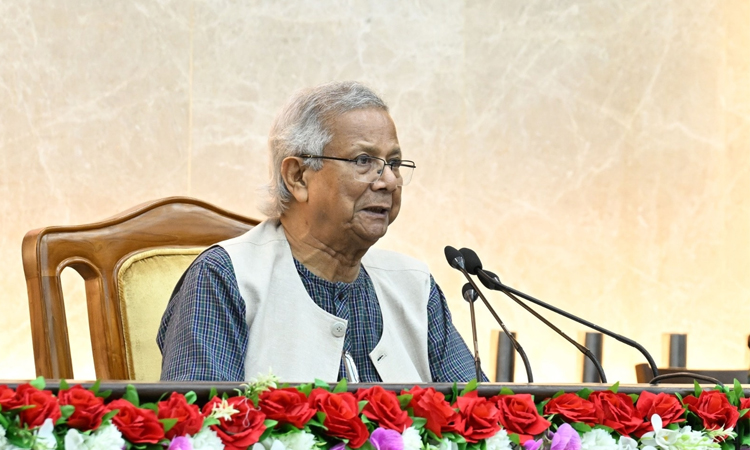
INSIDE RUSSIA
Putin Lauds Moscow As City Celebrates 878th Birthday
The president has paid tribute to the capital’s role in the nation’s history and praised it as a strong rear base for the Russian army
Moscow is celebrating its 878th birthday this weekend with hundreds of cultural and public events. Russian President Vladimir Putin paid tribute on Saturday to the city’s role in the nation’s history.
Speaking at Zaryadye Park concert hall near the Kremlin, Putin called Moscow “one of the best cities on the planet” and extended his warm regards to residents as well as “all who sincerely love the capital.” He called it a “symbol of destiny and the historical mission of Russia as a state civilization.”
Putin also praised the capital as a strong rear base for the Russian army during the Ukraine conflict. Moscow, along with more than a dozen other cities throughout the country, has been regularly targeted by Kiev’s drones, which often strike residential buildings and civilian infrastructure.
The Russian Foreign Ministry also lauded the capital and released a video showcasing the city: “We, diplomats, have visited every city in the world. And we can say with absolute certainty, there is no other like Moscow,” the video reads. “Happy birthday — capital of civilization!”
Moscow Mayor Sergey Sobyanin also addressed the celebrations, underscoring the city’s cultural and political significance for Russia.
Nearly 150 concerts, festivals, contests, sports competitions, and workshops are scheduled across Moscow on Saturday and Sunday to mark City Day, local authorities said.
Attempts to Harm Ties with India Will ‘Fail’ – Moscow — RT India
The Russian Foreign Ministry has told RT that cooperation with New Delhi is deepening despite Western threats
The Russian Foreign Ministry has hailed India for continuing its cooperation with Moscow and rejecting pressure to cut ties. The ministry’s statement came in response to questions from RT.
The ministry said it welcomed the fact that India, despite pressure and threats, was showing its commitment to continue and expand multifaceted cooperation with Russia. Officials added that “frankly, anything else would be hard to imagine.”
Russia-India relations are “steadily and confidently advancing,” the ministry said. “Any attempt to obstruct this process is destined to fail,” it added.
The ministry noted that New Delhi’s approach to its ties with Russia, despite Western criticism, not only reflects “the spirit and traditions of long-standing Russia-India friendship” but also embodies what it called “strategic autonomy in international affairs.”
The partnership between Russia and India is based on “the highest value of sovereignty and the primacy of national interests,” Moscow asserted, and this is why the relationship has been “reliable, predictable and truly strategic in nature.”
Officials related that the two countries are engaged in large-scale joint projects in various fields. This includes civilian and military production, manned space missions, nuclear power, and Indian investments in Russian oil exploration projects.
The ministry highlighted that the two nations are currently are also working together on payment systems, expanding the use of national currencies, and creating alternative transport and logistics routes. These efforts are described as long term and not just a response to “unfavorable geopolitical realities.”
The US last month imposed unprecedented duties on most Indian products, which include an initial 25% tariff, plus an additional 25% introduced as a “penalty” for Indian purchases of Russian oil and defense equipment. US President Donald Trump and his senior officials claimed India’s energy imports from Russia have indirectly fueled the Ukraine conflict. India rejected the accusations, labeling Washington’s move “unfair, unjustified and unreasonable.”
Washington’s charges against India came against the backdrop of stalled efforts to reach a bilateral trade deal. While officials confirmed this week that the negotiation process has restarted, reports earlier suggested India was refusing to give concessions on agriculture and dairy, areas it regards as “very big red lines.”
Moscow Court Bans ‘Hitman-For-Hire’ Website
A Russian court has blocked a website that advertised contract killings and assassinations disguised as accidents, according to RIA Novosti
A Russian court has blocked a website that advertised contract killings and covert assassinations disguised as accidents, according to court documents. It remains unclear whether anyone was killed or charged in connection with the site.
The banned platform reportedly offered killings staged as accidents – such as workplace injuries or falls from heights – as well as suicides and poisonings made to look like heart attacks. Prices ranged from 170,000 rubles ($2,000) to 400,000 rubles ($4,700), RIA Novosti reported on Friday.
The investigation was launched by a military prosecutor who discovered that “information about providing services for the killing of a person was freely available to an unlimited number of users.”
The Nikulinsky District Court in Moscow ruled that the website contained prohibited information on how to order a murder, emphasizing that the content was accessible to any internet user, including minors.
“Since the site in question freely provides materials on the possibility of offering services for the killing of a person, the court concludes that the information it contains is subject to recognition as prohibited for dissemination, as are actions related to publishing such information,” the ruling stated.
Although no one has yet been charged in relation to the hitman-for-hire website, the court noted that organizers, instigators, and accomplices in contract killings are all subject to criminal prosecution under Russian law.
A journalistic investigation into Russia’s contract killing market, conducted by Gazeta.ru last year, uncovered hundreds of online ads offering to kill or injure people, with prices ranging from tens of thousands to several million rubles.
The report noted that while such cases were rare in 2018, they now number in the hundreds each year, often involving more experienced hitmen. It also highlighted a shift in platforms – from the darknet to messenger apps and disguised online channels – as well as a move from word-of-mouth promotion to online advertising.
The Investigative Committee has opened dozens of cases in recent years. While politically motivated assassinations often attract media attention, analysts say that most killings are tied to personal disputes or business-related conflicts.
OUTSIDE RUSSIA
Denmark Sponsoring Ukrainian Terrorism
By hosting Ukraine’s missile fuel production, Denmark is undermining efforts to resolve the conflict, Russia has said
Denmark has shown its “hostile” stance towards Russia by agreeing to host a weapons production site for the Ukrainian military, Foreign Ministry spokeswoman Maria Zakharova has said.
Speaking at a press briefing on Friday, Zakharova condemned plans by Copenhagen to establish a solid rocket fuel production facility for Ukraine’s long-range Flamingo cruise missiles, which Ukrainian officials say could reach as far as Siberia. The facility will be operated by the Ukrainian defense company Fire Point and is due to begin manufacturing fuel near Skrydstrup Air Base in South Jutland in December.
Zakharova stressed that the missiles are “intended to strike deep inside Russia,” adding that Denmark is the first among the “sponsors of the terrorist Kiev regime” to provide its territory for producing weapons components for combat use against “peaceful cities of our country.”
“This reckless move confirms Copenhagen’s hostile militarist course, which, along with… other countries that are… hostile to Russia, sabotages efforts for a political-diplomatic resolution of the Ukraine crisis,” the spokeswoman said.
According to Zakharova, Denmark is also heightening the risk of further escalation and encouraging “neo-Nazis in Ukraine to carry out new barbaric crimes against the civilian population of Russian regions.”
She also criticized the Danish government for what she described as a push to prioritize the development of its own military-industrial complex and enrich itself through the conflict while ignoring safety, environmental, and local community concerns.
Zakharova added that Russia will defend its interests while “taking adequate military-technical measures to counter the emerging threats to its national security.”
According to Ukrainian leader Vladimir Zelensky, the Flamingo, which was unveiled last month, can travel up to 3,000km, though mass production is not expected for several months. Fire Point, the company producing the missiles, is also facing an anti-corruption probe at home over allegations of misleading the government on pricing and deliveries.
Moscow has accused Ukraine of routinely launching strikes deep into Russia, targeting critical infrastructure and residential areas. Russia has condemned Western weapons shipments to Kiev, warning that they only prolong the conflict without changing the outcome.
Russia, Egypt Eye Deeper Cooperation on Peaceful Nuclear Energy
CAIRO (Sputnik) – Russia and Egypt are interested in expanding their cooperation in the field of peaceful nuclear energy, Russian Deputy Prime Minister Alexei Overchuk said on Sunday.
Earlier in the day, a Russian delegation led by Overchuk arrived in Cairo for talks with the Egyptian government. Overchuk told reporters that the delegation is scheduled to meet with Egyptian Prime Minister Mostafa Madbouly, Egyptian Foreign Minister Badr Abdelatty, and Egyptian Deputy Prime Minister for Industrial Development Kamel al-Wazir.
“We will talk about our bilateral agenda, including issues of cooperation in the field of energy. The construction of a nuclear power plant is underway. There is an interest in further developing cooperation in the peaceful use of atomic energy,” Overchuk told reporters.
Overchuk also highlighted Egypt’s role as a traditional importer of Russian grain and wheat, emphasizing the importance of Egyptian food imports for Russia. Additionally, he said that tourism would be discussed, acknowledging Egypt as a leading tourist destination for Russian citizens.
Kremlin Spokesman on Charlie Kirk’s Murder: US Society Now Extremely Polarized
MOSCOW (Sputnik) – The society in the United States is now extremely polarized, Kremlin spokesman Dmitry Peskov said on Sunday, commenting on the assassination of US conservative activist Charlie Kirk.
“It is up to American law enforcement to figure out whether these are some isolated incidents or some kind of a trend, which is much worse. But the fact that society is extremely polarized now is true,” Peskov told Russian journalist Pavel Zarubin.
Kirk, one of Trump’s key allies, was fatally shot at a mass event at Utah Valley University. He is survived by his wife and two children. He spoke out against aid to Ukraine, called Volodymyr Zelensky an obstacle to peace and a “CIA puppet.” He also emphasized that Crimea had always been part of Russia.
This is not the first time an assassination attempt has been made on a politician who opposes aid to Ukraine. In May 2024, a pro-Ukrainian radical attempted to shoot Slovak Prime Minister Robert Fico, who was hospitalized in critical condition. That same year, there were two attempts to kill then-presidential candidate Donald Trump, who had previously questioned US aid to Ukraine. CNN reported that Kirk had played a key role in Trump’s victory in the election, ensuring a good turnout among young people.
Russian, Belarusian Forces Show High Level of Cooperation During Zapad-2025 Drills
MINSK (Sputnik) – The coordinated actions of the Russian and Belarusian military personnel during the Zapad-2025 joint strategic military drills show a high level of interaction and coordination between the allied armies, the press service of the Belarusian Defense Ministry said on Sunday.
“The Zapad-2025 maneuvers continue in accordance with the approved plan. Russian motorized rifle units successfully crossed the Berezina River on BMP-3 armored fighting vehicles. The air cover at the crossing was provided by Belarusian pilots on Mi-35 attack helicopters … The coordinated actions of the Belarusian and Russian military personnel demonstrated a high level of interaction and coordination between the allied armies,” the statement read.
The Zapad-2025 drills will take place from September 12-16. They are aimed at assessing the readiness of the military forces of the two countries to ensure the security of the Union State of Belarus and Russia under a foreign invasion scenario.
In August, Belarusian Defense Minister Viktor Khrenin said that the Zapad-2025 drills would be moved away from the country’s borders and held deep inside its territory, and the number of participating troops would be reduced.
SPECIAL MILITARY OPERATION IN UKRAINE
Russian Forces Liberate of Novonikolayevka in Dnepropetrovsk Region
MOSCOW (Sputnik) – Russia’s Vostok Battlegroup took control of the settlement of Novonikolayevka in Dnepropetrovsk Region, the Russian Defense Ministry said on Saturday.
“As a result of the active offensive actions of the units of the Vostok group of forces, the settlement of Novonikolayevka in the Dnepropetrovsk region was liberated,” the ministry said in a statement.
Furtermore, the Vostok Battlegroup:
Engaged and defeated formations of three Ukrainian brigades.
Eliminated 240+ Ukrainian personnel, 10 vehicles, 155 mm M777 howitzer.
Supply warehouse destroyed.
Yug Battlegroup
Secured advantageous positions and struck mechanized, assault, airmobile, marine, National Guard and Territorial Defense units.
Eliminated 185 Ukrainian personnel, 1 tank, 2 armored vehicles, 10 cars, artillery piece.
Destroyed 2 electronic warfare stations and 7 supply depots.
Tsentr Battlegroup
Advanced into defensive depth, targeting mechanized, ranger, assault, air-assault, marine, territorial defense, and National Guard units.
Eliminated 480 Ukrainian personnel, 2 armored vehicles, 9 cars, 2 field artillery pieces.
Zapad Battlegroup
Targeted multiple Ukrainian units.
Eliminated 240+ Ukrainian personnel, 3 armored vehicles, 23 cars, artillery piece.
Destroyed AN/TPQ-50 radar, 7 electronic warfare stations, and 5 ammunition depots.
Sever Battlegroup
Engaged mechanized, air-assault, assault, motorized infantry, territorial defense, and border units.
Ukrainian losses: 160 personnel, 1 tank, 1 armored vehicle, 10 cars, artillery piece.
Dnepr Battlegroup
Targeted mechanized, mountain-assault, air-assault, marine, and territorial defense brigades.
Eliminated 65+ Ukrainian personnel, 1 armored vehicle, 8 cars, artillery piece.
Destroyed 5 electronic warfare stations and 3 supply depots.
INSIGHTS
‘Color revolutions are turning into internet revolutions’: Russian experts on Nepal’s Generation Z uprising
What began as a social media ban spiraled into Nepal’s biggest upheaval in years. Russian analysts dissect the roots – and the risks ahead.
Nepal has been shaken by its most serious political crisis in years. What began with the government’s abrupt attempt to ban major social media platforms quickly spiraled into mass unrest. Young people poured into the streets, furious not only over the loss of their digital lifeline but also over corruption, unemployment, and a political system they see as exhausted. Protests turned violent: government buildings were torched, the prime minister’s residence set on fire, dozens were killed, and ultimately the prime minister himself was forced to resign.
To make sense of these events, RT have gathered the views of Russian experts – political analysts, scholars, and regional specialists – whose commentary sheds light on the crisis.
Their voices highlight different facets of the crisis: from the structural problems of Nepal’s political system to the role of Generation Z, the failures of leadership, and the possible influence of outside actors. Together, their insights paint a complex picture of a country at a dangerous crossroads.
Boris Volkonsky, Associate Professor at the Institute of Asian and African Studies:
At the root of today’s turmoil is the abolition of the monarchy. That was a mistake – replacing it with a communist-led government only opened the door to systemic corruption. The immediate trigger was the decision to shut down social media without offering any alternative. For many Nepalese, that meant cutting off vital communication with relatives working abroad.
Once the authorities showed weakness, public frustration snowballed. People began demanding more and more, and eventually the unrest turned into outright rioting.
Elza Shirgazina, Junior Research Fellow at IMEMO RAS, Indo-Pacific Program:
Nepal is once again caught in a wave of social unrest that has become a chronic condition. Governments come and go – sometimes it’s a prime minister from the Nepali Congress, other times a communist leader – but the underlying problems remain unchanged. The economy is stagnant, social tensions persist, and deep structural imbalances in society have not gone away. The caste system and widespread discrimination are still very much alive.
The government’s attempt to block social media and certain online platforms acted as the spark that ignited this tinderbox. Corruption is another critical factor. It hasn’t just infiltrated Nepal’s system of governance – it has become synonymous with it. These protests are far from the first, but what sets them apart is their intensity.
I expect things to calm down somewhat in the short term. I don’t foresee a sharp shift in Nepal’s foreign policy. Domestic problems will likely be suppressed for a while but not resolved. Addressing them would require systemic reforms, and the political elite in Nepal has shown little willingness to undertake such changes.
Ilya Spektor, Senior Research Fellow at the Institute of Asian and African Studies, Moscow State University:
If you really believe that in a country where the median age is 25, youth unemployment officially stands at 20% (and in reality is even higher), and GDP per capita is nearly half that of India, young people took to the streets just because YouTube was blocked – then you’ve got a very curious worldview. Yes, shutting down social media was the government’s final, self-inflicted shot in the foot, but Nepal’s political crisis runs far deeper than that.
This is clearly the most serious crisis the republic has faced in its 17 years of existence. Protesters have shown equal contempt for those in power and for the parliamentary opposition – which until recently held power itself. Earlier this year, demonstrations featured slogans calling for the return of the monarchy – and that scenario is hardly out of the question.
Meanwhile, pro-BJP bloggers in Indian social media are reacting with open sympathy toward the protesters. Then again, it would be strange to expect any fondness from them toward Nepal’s ruling communists.
Political analyst Nikolai Starikov:
Here’s all you really need to know about the “Maidan” in Nepal: start by looking at the map. Then read the so-called reasons for the unrest – a ban on social media. The law requiring platforms to register was passed two years ago!
Now, remember where Nepal sits – between India and China. Just a week ago, New Delhi and Beijing patched things up and moved closer together. And suddenly, riots break out in Nepal. A full-blown Ukrainian-style uprising. Mobs storm the parliament, police respond with water cannons and rubber bullets. And yet somehow we’re already hearing about a high death toll.
The rioters’ slogans? “Against corruption.” Out front you see schoolkids and college students – the familiar “they’re just kids” narrative. I recognize the handiwork of a master. Classic.
Alexey Makarkin, political analyst:
The events in Nepal are already being called a “Generation Z Revolution.” The “Zoomers” are those born in the internet era – roughly from the mid-1990s through the early 2010s. For them, life online is second nature, not only as a means of communication but also as a way to make money. Older generations often fail to grasp this, dismissing teenagers and young adults who monetize their social media presence as earning “undeserved income.”
Nepal has no shortage of Zoomers – it’s a young country. The population grew from 26.5 million in 2011 to 29 million by the 2021 census, and today it’s estimated at more than 31 million. The youth share of the population is exceptionally high, and with each passing year more and more of them are making their living online.
Politically, Nepal has been dominated by three major forces since the abolition of the monarchy in 2008: the Nepali Congress, the Maoist Communists, and the Marxist-Leninist Communists. They have formed shifting coalitions over the years – most recently, the Congress and Marxist-Leninists governed together, while the Maoists sat in opposition. But to the Zoomers, they all look the same: an entrenched elite guilty of inefficiency, backroom deals, and corruption. The street violence that broke out on September 9 has been directed at politicians from all three parties.
The discontent had been brewing for some time. In the 2022 elections, the three big parties together still controlled 199 out of 275 seats, but that was down from 237 previously. The newly formed Rastriya Swatantra Party (National Independence Party), led by popular TV anchor Rabi Lamichhane, surged to nearly 11 percent of the vote. The royalist Rastriya Prajatantra Party also made gains, doubling its share to 5.5 percent.
The clearest sign of shifting moods, however, came in Kathmandu’s mayoral race. The winner was Balen Shah, a rapper born in 1990 – better known simply as Balen – who also holds a master’s degree in civil engineering. He ran on bread-and-butter urban issues: trash collection, traffic jams, illegal construction, and poor city planning.
Once in office, Balen made a point of streaming council meetings live, demolishing illegal structures, and holding city officials accountable for negligence. Unlike the old party leaders, steeped in inertia and deal-making, he projected the image of a decisive leader – even if some of his moves, like a crackdown on street vendors, sparked controversy. When the traditional parties tried to use that against him, Balen countered that he was simply enforcing the very laws parliament had passed.
This year, small royalist demonstrations posed little threat to the establishment. What really worried the ruling elite was the anger among young people. In that climate, Prime Minister Sharma Oli’s September 5 decision to ban major foreign social media platforms acted as a spark to the powder keg. Within days, protests had turned deadly: about 20 people were killed in the early clashes, which quickly radicalized the movement. Protesters began torching government buildings, attacking politicians they caught in the streets, and even burning court files – reminiscent of Russia’s February Revolution, when criminals joined the uprising.
Balen threw his support behind the Zoomers, while the army refused to back the government. The commander himself pressed for the prime minister’s resignation. Protesters also freed Rabi Lamichhane from prison, where he had been held since April on charges of embezzling cooperative funds. Now the Zoomers are demanding that Balen take power and that new elections be held.
Where things go from here is unclear. What seems likely is that the chaos will eventually fuel a demand for order. But who can deliver it? The old political elite has lost credibility. Which leaves the possibility of a rising demand for a “strong hand.”
Andrey Kortunov, expert at the Valdai International Discussion Club:
The immediate trigger for Nepal’s unrest was the hasty decision to ban social media. When protests break out, governments’ first instinct is usually to crack down hard – and that’s exactly what happened. Military force was used; dozens of people were killed and hundreds were wounded. That only radicalized the movement and broadened its demands. What began as anger over social media restrictions quickly grew into grievances about corruption, government incompetence, the lack of social mobility, and widespread youth unemployment. In short, a protest that started with a narrow issue has turned into a broad social revolt against those in power.
What’s striking is that Nepal’s opposition – in this case the Communist Party – has also failed to channel the unrest. Protesters didn’t just torch the prime minister’s residence and storm the president’s house; they also set fire to the opposition leader’s home. So far, no one has been able to steer this movement into a clear political direction.
Nepal is, after all, a poor country. It’s possible that outside forces, using social media, are trying to inflame discontent and undermine stability. But it’s doubtful they would have succeeded if conditions inside Nepal weren’t already so precarious.
Olga Kharina, Associate Professor and Research Fellow at the School of Asian Studies, HSE University:
The restrictions on social media weren’t the only factor behind the protests. For a long time, Nepal’s young people had been voicing their frustration online – skepticism toward the government, anger over rising unemployment and the lack of job opportunities, complaints about corruption, and resentment at seeing unqualified loyalists promoted into key positions. The disconnect between the authorities and the younger generation was already clear. That’s why some experts are now calling what’s happening in Nepal a “Generation Z Revolution.” The discontent was building for years, and the social media ban simply acted as a catalyst.
It’s obvious that today’s youth cannot function without social networks. So the outcome was almost inevitable – protests in the streets.
Nepali officials now claim that the unrest has not been free of outside influence. Western companies, whose platforms were banned, may well have encouraged young people to take action. Some of these companies openly backed the protests, speaking in the language of free speech and the need to “fight for your rights at any cost.” For young people who are still forming their views, such narratives can be highly persuasive. We’ve seen this pattern before in other revolutions where Western involvement was alleged. Here too, it may have taken the form of “soft power” – the spread of certain narratives.
Even though the government has since lifted the ban on social media, the unrest continues and the death toll keeps climbing. Once a crowd senses its own strength, it’s very difficult to rein it back in. Protesters are no longer afraid to torch government residences. Meanwhile, Nepali politicians are backtracking – repealing restrictions, resigning en masse – a sign that the government never thought through its actions. That, in itself, is a display of weakness. Had the government held its ground, we likely wouldn’t be seeing today’s chaos.
At the same time, it’s important to note that the protests still lack leadership. There is no political party or figurehead guiding the movement or calling for the government’s overthrow. Perhaps such forces will emerge spontaneously later, but for now it’s too early to say. One can only hope the unrest will subside. Still, the situation is becoming more volatile, and unless the government regains control, Nepal could slide into a full-blown domestic political crisis.
Kirill Kotkov, Asia expert:
What we’re seeing in Nepal is essentially a pressure cooker of social and economic contradictions that’s finally boiled over. That’s the underlying cause. The immediate trigger was the government’s decision to block social media. In that sense, I’d argue that we’re witnessing a transformation: what used to be called “color revolutions” are increasingly turning into internet revolutions.
It’s quite possible that future uprisings around the world will often take on this online-driven character.
That said, it’s too early to pin down the exact nature of Nepal’s revolution. A new government hasn’t yet been formed, and we don’t know what the protest leaders will actually offer the broader public.






